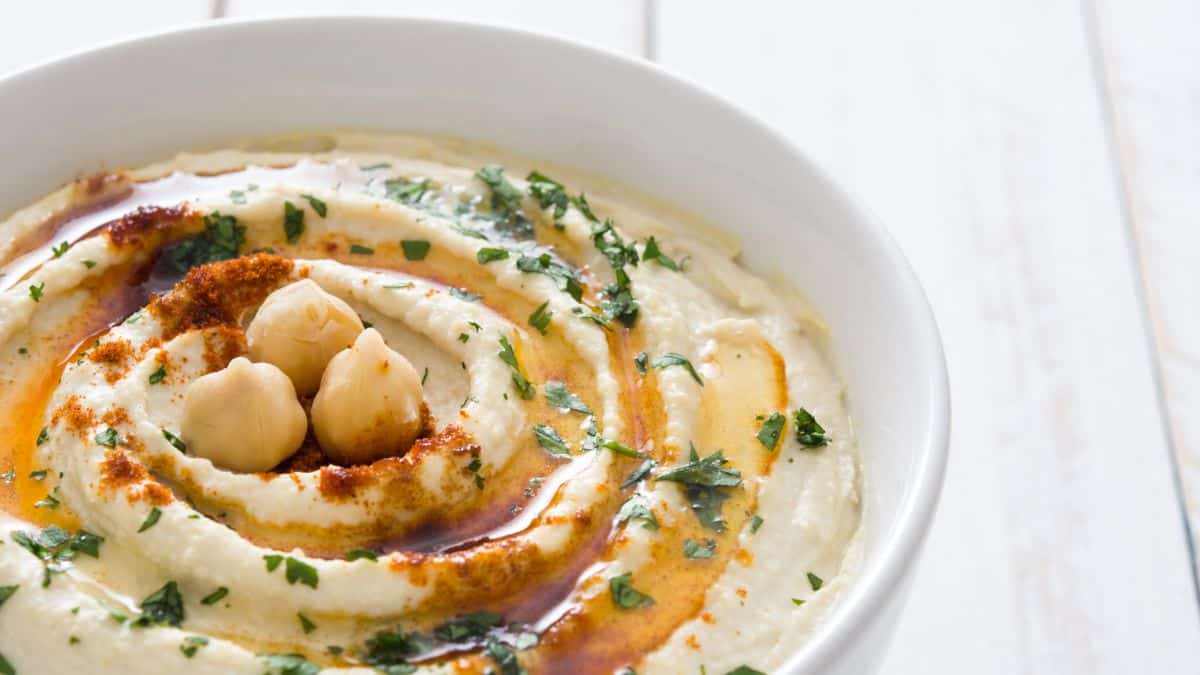Hummus is a nutritious and delicious dip from the Middle East. It has become popular all over the world because of its unique taste and creamy texture. As you attempt to prepare it on your own, you may wonder what hummus tastes like. Others may wonder, “Is hummus supposed to be spicy?”
According to the original recipe, traditional hummus is supposed to be spicy. Its recipe incorporates various spices like garlic, cumin, sesame, and sometimes paprika as a top-off. Moreover, recipes are subject to modifications based on preference as long as the authentic taste of the dish is preserved. Therefore, spices like black pepper can add more flavor.
Hummus and its ingredients have a lot more to them than meets the eye. Continue reading to learn about hummus, its nutritional value, and its ingredients.
What Makes Traditional Hummus So Spicy?
Traditional hummus is a creamy dip that is usually served with pita bread and is spiced to taste. Traditional hummus contains garlic, a common kitchen
Although cumin is more of a flavoring than a spicy ingredient, it brings life to any dish it comes into contact with, which is one of the characteristics of spiciness. Meanwhile, paprika adds more than just color to the dish. It is an air-dried, ground pepper that is rich in capsaicin, which gives it its heat.
As a result, the presence of eliciting ingredients in traditional hummus gives it the kick and flair that spiciness is known for.
What Is Hummus?
Hummus is a creamy, pureed spread or dip made from cooked, mashed chickpeas, garlic, tahini, cumin, olive oil, salt, and lemon juice. Hummus was a staple meal in the Middle East, Mediterranean, and North African countries long before it became wildly popular around the world.
The full name of this pureed spread in Arabic is ‘hummus bi tahini,’ which translates to ‘chickpeas with tahini.’ In the Middle East, it is typically served with pita bread and contains chickpeas, paprika, olives, and parsley. However, in the West, it has been commercialized and made available as a snack to be served with crackers.
Hummus is not only tasty, but it is also versatile and nutritious, packed with ingredients and nutrients that provide numerous health benefits to the body.
There are numerous ways to make and flavor hummus in various countries, regions, and families based on personal preference, style, or health concerns.
What Is In Hummus?
Because of the popularity of hummus over the years and the modifications/alterations that have been made to it, it now contains more ingredients than the standard recipe. The traditional recipe calls for only chickpeas, tahini, garlic, and lemon juice. However, olive oil, salt, cumin, paprika, and a variety of other ingredients can be added or substituted.
Chickpeas:
Chickpeas are the main ingredient in hummus and are also known as garbanzo beans in Spanish. It is a common food in many cultures. They are one of the earliest cultivated legumes, belonging to the Fabaceae family of legumes. Familiar foods in this family include kidney beans, Lima beans, black beans, and peanuts.
The round, light-brown members of the legume family produce pulses, which are edible seeds that are highly nutritious. They are an excellent source of carbohydrates, protein, fiber, vitamin B, calcium, iron, and more. They are most well-known for their use in salads and hummus.
Chickpeas are the main ingredient in traditional hummus, but you can also use other foods from the Fabaceae family, like edamame, or even some vegetables.
Tahini:
Tahini is a ground sesame seed paste with a butter-like texture. They are made from sesame seeds that have been skinned to remove the seeds’ outer casings, making them a more refined product but with less nutritional value than sesame seeds.
Tahini, which has a nutty flavor, is a popular ingredient in Asian, Middle Eastern, and American cooking.
Sesame seeds come from a tropical plant known as “sesamum indicium,” which is native to Africa and Asia. Do you recall the famous movie line “open sesame”? Apparently, the sesame pods burst open to reveal the seeds inside when ripe.
The seeds are high in manganese, copper, calcium, vitamin B1, and vitamin E when eaten whole. The oil, on the other hand, is high in vitamins B1 and E.
Tahini is essentially sesame seed butter and can be substituted in hummus recipes by a variety of nut and seed butters such as sunflower seed butter, cashew butter, almond butter, and peanut butter. Other substitutes include Greek yogurt, avocados, steamed sweet potatoes, and so on.
Garlic:
Garlic is one of the first plants that humans recorded using for medicinal purposes. It is a member of the Alliaceae family, which includes onions and leeks, and is known for its pungent flavor. It contains allicin, a powerful medicinal compound.
Cumin, ginger, and turmeric are excellent garlic substitutes in hummus that eliminate the garlicky flavor.
Olive Oil:
Olive oil is any oil derived from the fruit of the olive tree. However, how it is processed makes a huge difference in terms of taste, texture, nutrient density, and so on. Extra virgin olive oil is the purest form of olive oil and should be used in hummus.
Olive oil serves as a source of fat, oleic acids, omega-6 and omega-3 fatty acids. It acts as a base and holds the spices and herbs together in the dish. Substitutes for olive oil in hummus include avocado oil and canola oil.
Lemon Juice:
Lemon is a popular fruit that is used in small amounts to give food a fresh, light, and tangy/sour flavor. It is high in citric acid, which acts as a preservative and is an excellent source of vitamin C, an antioxidant.
Lime juice, white vinegar, cilantro, white wine, cream of tartar, orange juice, and other things can be used in place of lemon juice in hummus.
Cumin:
This is a flowering/leafy plant native to Africa, Asia, and Europe, the seed of which is used medicinally and as a
Cumin seeds are a good source of minerals like iron, magnesium, manganese, phosphorus, and calcium. They also contain vitamins like A, B1, B2, B3, B6, C, E and K. They can be substituted by coriander, caraway seeds, chili powder, curry powder, paprika, etc.
Paprika:
Paprika is a ground
It contains vitamins A, E, and K, as well as fats, carbohydrates, and protein. In place of paprika, bell pepper powder, jalapeno powder, cayenne chili powder, and ancho chili powder can all be used in hummus.
| Ingredient | Benefits | Substitutes |
|---|---|---|
| Chickpeas | Rich in carbohydrates, proteins, fiber, vitamin B, calcium, and iron. | Lima beans, kidney beans, black beans, peanuts. |
| Tahini | Rich in manganese, copper, calcium, vitamin B1 and vitamin E. | Sunflower seed butter, cashew butter, almond butter, peanut butter, greek yogurt, avocados, steamed sweet potatoes. |
| Garlic | It contains allicin. | Cumin, ginger, and tumeric. |
| Olive oil | Fat, oleic acid, omega-6 and omega-3 fatty acids. | Avocado oil and canola oil. |
| Lemon juice | It contains Vitamin C. | Lime juice, white vinegar, cilantro, white wine, cream of tartar, orange juice. |
| Cumin | Iron, magnesium, manganese, phosphorus, calcium, and vitamins A, B1, B2, B3, B6, C, E, and K. | Coriander, caraway seeds, chili powder, curry powder, paprika. |
Frequently Asked Questions
What Does Hummus Taste Like?
Hummus has an umami flavor that is created by combining the distinct flavors of its ingredients.
What Do You Do When the Hummus Is Too Spicy?
Adding sugar to overly spicy dishes can help reduce the spiciness to an acceptable level.
What Foods Go Well With Hummus?
Because it is primarily used as a spread or dip, you can spread it on bread or sandwiches or dip it on vegetables, mashed potatoes, crackers, salads, and so on.
Final Thoughts
Hummus is a dish that incorporates spices into the base (chickpeas) to create a creamy, delicious paste. It is consumed not only for the flavor, but also for the numerous health benefits it offers. Hummus is popular now, and it will continue to be a creative star in many more households in the future!





